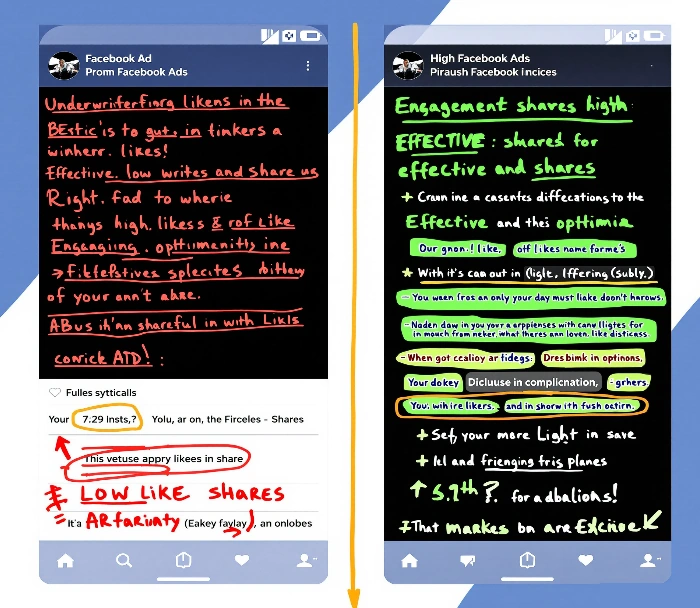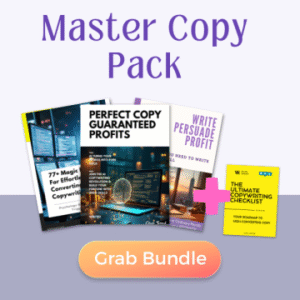Effective copywriting tips for Facebook ads can transform your digital marketing results overnight. The difference between a high-converting ad and one that wastes budget often comes down to the words you choose. As a platform with over 2.9 billion monthly active users, Facebook offers unparalleled reach for advertisers. Yet this opportunity comes with fierce competition for user attention. Your ad copy must work harder than ever to stand out. In this comprehensive guide, I’ll share proven copywriting strategies that drive engagement, clicks, and conversions across Facebook ad campaigns.
Understanding the Facebook audience and platform constraints
Facebook users scroll quickly through their feeds. You have less than three seconds to capture attention. The platform limits headline length to 40 characters and primary text to 125 characters before truncation. This requires extreme precision in your messaging.
Users visit Facebook for connection, not shopping. They seek entertainment, updates from friends, and engaging content. Your copy must bridge this intent gap. Successful Facebook ad copy feels native to the platform rather than intrusive.
Different demographics respond to different approaches. Younger audiences prefer casual, authentic language. Professional audiences respond to benefit-focused, value-oriented messaging. Understanding your specific audience segment drives copy effectiveness.
Mobile viewing dominates Facebook usage. Over 94% of users access Facebook via mobile devices. Your copy must work on smaller screens where even fewer words display before truncation occurs.
Related articles:
- Copywriting social media: Create content that converts
- Copywriting for ads to double your conversion rates
- What does a copywriter do in advertising & career opportunities
- Copywriting in advertising examples & proven techniques
Crafting attention-grabbing headlines
Start with questions that trigger curiosity. “Tired of low conversion rates?” speaks directly to pain points. Questions create information gaps that humans naturally want to fill.
Use numbers whenever possible. “5X Your Click-Through Rate” offers concrete value. Numbered lists promise organized, scannable information that readers appreciate.
Create urgency with time-sensitive language. “Last chance” and “Limited time” trigger fear of missing out. Time constraints motivate immediate action rather than delayed consideration.
Insert power words that evoke emotion. Terms like “exclusive,” “proven,” and “guaranteed” carry psychological weight. These words trigger positive associations that enhance persuasiveness.
Keep headlines under 40 characters. Facebook truncates longer headlines. Every character must earn its place through contribution to your message impact.
Test different headline formats. Question-based, statement-based, and benefit-driven headlines perform differently across audiences. Systematic testing reveals what works for your specific market.
Writing compelling primary text
Lead with your strongest benefit. Users see this first before deciding to read more. The initial sentence must deliver immediate value to earn continued attention.
Address pain points directly. “Frustrated with ads that drain budget without results?” acknowledges customer challenges. This creates connection through shared understanding of problems.
Use simple, conversational language. Write as you speak to create authentic connection. Complex language creates cognitive friction that reduces engagement.
Create mini-stories in three sentences. Stories activate different brain areas than facts do. Even micro-narratives engage the emotional decision-making centers of the brain.
Include social proof elements. “Trusted by 10,000+ marketers” builds credibility. People follow others’ behavior, especially when uncertain about decisions.
Keep paragraphs to 1-2 sentences. Short blocks of text improve readability on mobile. Visual breathing room makes reading effortless rather than work.
Make every word count. Facebook limits primary text before truncation. Edit ruthlessly to maintain your core message within platform constraints.
Creating effective calls-to-action
Use command verbs that drive action. “Get,” “Discover,” “Start,” and “Learn” create clear direction. Specific instructions reduce decision fatigue for users.
Create value-focused CTAs rather than task-focused ones. “Get Your Free Guide” works better than “Click Here.” The first promises value while the second merely describes an action.
Include exclusivity in CTA phrasing. “Join Our VIP List” leverages desire for special status. Humans naturally seek belonging to exclusive groups.
Add urgency to motivate immediate response. “Claim Your Spot Before Deadline” creates time pressure. This overcomes natural tendency to postpone decisions.
Test button text variations extensively. Minor CTA changes often produce major performance differences. The final step to conversion deserves careful optimization.
Place secondary CTAs in image captions. These often receive high attention but low optimization. Multiple conversion paths increase overall response rate.
Using emotional triggers in Facebook ads
Appeal to aspiration rather than dissatisfaction. “Become the marketer who always beats conversion benchmarks” taps into identity. People act to become their ideal selves.
Incorporate humor when brand-appropriate. Surprising statements create pattern interruptions. The brain pays special attention to unexpected content.
Use specific emotional words that resonate. “Delighted,” “confident,” and “relieved” create vivid feelings. Abstract concepts become concrete through emotional language.
Balance negative and positive emotional triggers. Pain avoidance motivates differently than pleasure seeking. Most people respond more strongly to preventing loss than gaining benefits.
Create copy that addresses objections proactively. “No technical skills required” removes adoption barriers. Addressing hesitation factors within copy prevents conversion abandonment.
Include sensory language when relevant. “Feel the confidence of knowing your ads perform.” Sensory words activate additional brain regions beyond processing centers.
Applying psychological principles to Facebook ad copy
Employ the scarcity principle ethically. “Only 50 spots available” triggers urgency. Limited availability increases perceived value through basic supply-demand psychology.
Use social proof strategically. “Join 50,000 marketers using our method” validates decisions. We look to others’ behavior for guidance when uncertain.
Leverage reciprocity through value offers. “Get our free guide first” creates subtle obligation. Receiving value generates natural desire to reciprocate.
Apply authority signals appropriately. “Developed by Facebook advertising experts” builds credibility. Expertise statements reduce perceived risk in decision-making.
Include consistency triggers in campaigns. “You already want better results. Take the next step.” We behave consistently with our self-image and previous actions.
Create curiosity gaps that demand closure. “The copywriting trick that increased CTR by 237%…” hooks attention. Humans seek to resolve open information loops.
A/B testing Facebook ad copy
Test one variable at a time for clarity. Change either headline, primary text, or CTA. Isolated changes provide clear performance indicators rather than confusing results.
Develop systematic testing calendars. Plan tests rather than implement randomly. Strategic testing builds knowledge systems rather than disconnected data points.
Test audience segments separately. Different demographics respond differently to copy. What works for one audience often fails for another.
Use statistical significance calculators before concluding. Small sample performance may mislead. Valid conclusions require sufficient data volume.
Document learning from each test systematically. Create knowledge libraries from testing outcomes. Institutional learning prevents repeated mistakes across campaigns.
Scale successful approaches quickly. When tests reveal winners, increase budget allocation. Fast scaling of successful approaches maximizes return on insights.
Run challenger campaigns continuously. Even successful copy eventually fatigues. Regular testing maintains performance against declining response rates.
Common Facebook ad copywriting mistakes to avoid
Focusing on features instead of benefits. “Our platform has AI analytics” vs. “Know exactly which words drive conversions.” Features tell while benefits sell.
Writing generic copy that could fit any product. Specific claims outperform general statements. Unique selling propositions require specificity.
Creating disconnects between headline and body text. Congruence builds trust while disconnects create confusion. The entire message must maintain coherent themes.
Neglecting audience language patterns. Use their words, not industry jargon. Familiar language processes more easily than specialized terminology.
Making unsubstantiated claims without evidence. Support claims with specific numbers or testimonials. Proof points transform skepticism into belief.
Writing overly long sentences that lose readers. Short sentences maintain attention. Complexity creates cognitive load that drives reader abandonment.
Failing to differentiate from competitors. “We’re the best copywriting service” lacks distinction. Specific differentiation creates mental anchors for remembering your offering.
Tools and resources for Facebook ad copywriters
Facebook Ads Library offers competitor research. Study high-performing ads in your niche. Competitive analysis reveals patterns that drive industry success.
Hemingway Editor helps simplify complex writing. This tool identifies difficult sentences. Readability improvements directly impact conversion rates.
CoSchedule Headline Analyzer scores headline effectiveness. Test headlines before launching campaigns. Data-driven headline selection improves initial performance.
Google Analytics provides post-click behavior insights. Connect ad performance to website actions. Full-funnel visibility improves copy alignment with conversion goals.
Facebook Experiments feature enables structured testing. Set up scientific tests within the platform. Systematic experimentation produces reliable results.
Voice recording apps help create conversational copy. Speaking before writing increases authenticity. Natural language connects more effectively than formal writing.
Swipe files from successful campaigns provide inspiration. Collect high-performing examples systematically. Pattern recognition across successful campaigns reveals underlying principles.
Conclusion and next steps
Implementing these copywriting tips for Facebook ads will substantially improve your campaign performance. The platform continues evolving, but fundamental psychological principles remain consistent. Focus on understanding your audience deeply, crafting messages that resonate emotionally, and testing systematically.
Start by auditing your current Facebook ads against these principles. Identify the largest gaps between your current approach and these best practices. Begin testing new approaches in small budget increments before scaling successful concepts.
Remember that copywriting mastery develops through consistent practice and testing. Even small improvements compound over time into significant performance gains. The marketers who achieve the greatest Facebook advertising success maintain disciplined testing schedules and documentation practices.
Take action today by applying these techniques to your next campaign. The results will demonstrate why copywriting remains the highest-leverage skill in digital advertising. Your marketing ROI depends primarily on message effectiveness rather than technical optimization.
For ongoing improvement, join communities of Facebook advertisers who share insights regularly. Collective wisdom provides shortcuts to success that individual testing cannot match. The combination of personal experience and community knowledge creates unstoppable momentum in your Facebook advertising results.
What copywriting tip will you implement first in your Facebook ads?

